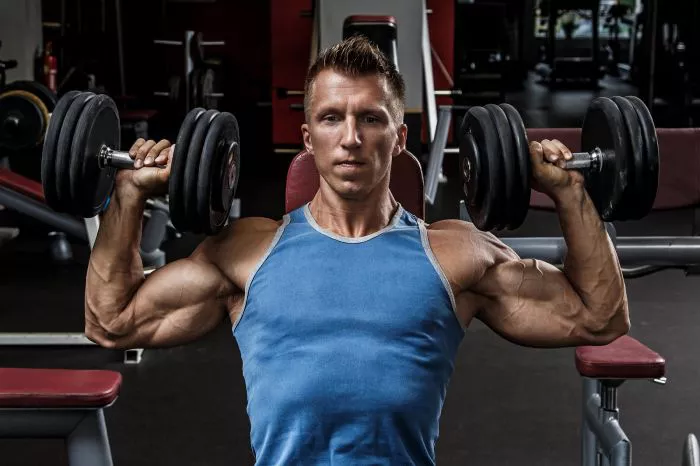Dumbbell exercises are highly effective for building biceps due to their versatility and ability to isolate the muscle. This article will explore the best dumbbell exercises for biceps, detailed techniques, benefits, and tips for maximizing your workout. Let’s dive into the world of biceps training with dumbbells!
Introduction
The biceps brachii, commonly known as the biceps, is a crucial muscle for arm strength and aesthetics. Dumbbell exercises provide a dynamic and effective way to target this muscle group. Whether you’re a beginner or an experienced lifter, incorporating the right dumbbell exercises into your routine can lead to impressive gains.
Benefits of Using Dumbbells for Biceps
Using dumbbells for biceps training offers several advantages:
Versatility: Dumbbells allow for a wide range of exercises.
Balance Improvement: They help improve muscular imbalances.
Increased Range of Motion: Dumbbells provide a greater range of motion.
Isolation: They allow for better isolation of the biceps muscle.
Best Dumbbell Exercises for Biceps
Dumbbell Bicep Curl
How to Perform:
- Stand with your feet shoulder-width apart.
- Hold a dumbbell in each hand, palms facing forward.
- Curl the weights while keeping your upper arms stationary.
- Squeeze your biceps at the top and slowly lower the dumbbells.
Benefits:
- Directly targets the biceps.
- Improves muscle symmetry.
Hammer Curl
How to Perform:
- Stand with your feet hip-width apart.
- Hold the dumbbells with your palms facing your torso.
- Curl the weights while keeping your upper arms stationary.
- Squeeze your biceps at the top and slowly lower the dumbbells.
Benefits:
- Emphasizes the brachialis muscle.
- Enhances forearm strength.
Concentration Curl
How to Perform:
- Sit on a bench with your legs spread.
- Hold a dumbbell with one hand, resting your elbow on your inner thigh.
- Curl the weight towards your shoulder.
- Squeeze your biceps at the top and slowly lower the dumbbell.
Benefits:
- Maximizes biceps isolation.
- Reduces cheating by using momentum.
Incline Dumbbell Curl
How to Perform:
- Set an incline bench at a 45-degree angle.
- Sit back and hold a dumbbell in each hand, arms hanging down.
- Curl the weights while keeping your upper arms stationary.
- Squeeze your biceps at the top and slowly lower the dumbbells.
Benefits:
- Stretches the biceps.
- Enhances the peak contraction.
Zottman Curl
How to Perform:
- Stand with your feet shoulder-width apart.
- Hold a dumbbell in each hand, palms facing forward.
- Curl the weights up, rotate your wrists so palms face down.
- Slowly lower the weights in the reverse curl position.
Benefits:
- Targets both biceps and forearms.
- Improves grip strength.
Spider Curl
How to Perform:
- Lie chest-down on an incline bench.
- Hold a dumbbell in each hand, arms hanging down.
- Curl the weights up while keeping your upper arms stationary.
- Squeeze your biceps at the top and slowly lower the dumbbells.
Benefits:
- Ensures constant tension on the biceps.
- Reduces cheating.
Tips for Maximizing Biceps Workout
Proper Form: Always prioritize form over weight.
Controlled Movement: Avoid using momentum.
Full Range of Motion: Ensure you use the full range of motion.
Progressive Overload: Gradually increase the weight.
Rest and Recovery: Allow time for muscle recovery.
See Also: Which Type Of Dumbbell Is Best
Common Mistakes to Avoid
Using Too Much Weight: Focus on form rather than heavy weights.
Inconsistent Training: Maintain a regular training schedule.
Neglecting Other Muscles: Balance your workout routine.
Poor Nutrition: Eat a balanced diet to support muscle growth.
Sample Biceps Workout Routine
Beginner Routine:
Dumbbell Bicep Curl: 3 sets of 12 reps
Hammer Curl: 3 sets of 12 reps
Concentration Curl: 3 sets of 10 reps
Advanced Routine:
Incline Dumbbell Curl: 4 sets of 10 reps
Zottman Curl: 4 sets of 10 reps
Spider Curl: 4 sets of 12 reps
Conclusion
Incorporating dumbbell exercises into your biceps workout routine can significantly enhance muscle growth and strength. By performing these exercises with proper form and consistency, you can achieve impressive results. Remember to pair your workouts with a balanced diet and adequate rest for optimal gains. Whether you’re a beginner or advanced lifter, these dumbbell exercises will help you build strong, well-defined biceps.
FAQs
Q: How often should I train my biceps?
A: Aim to train your biceps 2-3 times per week, allowing at least 48 hours of rest between sessions.
Q: Can I train biceps with other muscle groups?
A: Yes, biceps are often trained with back or as part of an arm day routine.
Q: How long will it take to see results?
A: Results vary, but with consistent training and proper nutrition, noticeable changes can occur within 4-6 weeks.
Q: Should I use heavy weights or high reps for biceps growth?
A: A mix of both can be effective. Heavy weights with lower reps build strength, while lighter weights with higher reps improve muscle endurance.
Q: Can I train biceps if I have elbow pain?
A: If you have elbow pain, consult a medical professional before continuing your workout routine. Adjusting your form or the weights used can help alleviate pain.
By following these guidelines and incorporating the best dumbbell exercises for biceps, you can effectively target and grow your biceps muscles, leading to a stronger and more aesthetically pleasing physique. Happy lifting!


